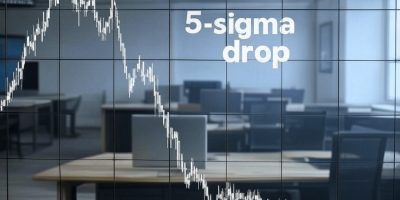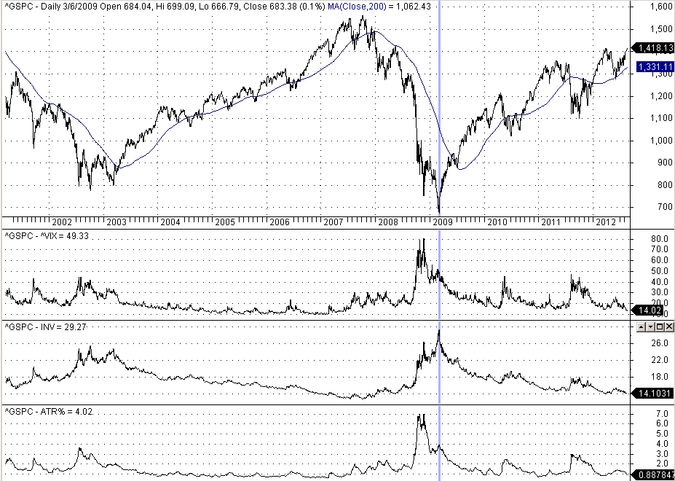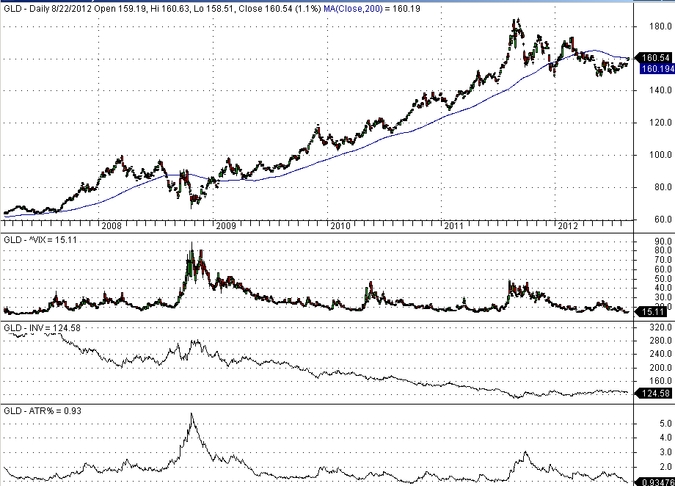Equity investment risk is proportional to the inverse of price. This is the new paradigm for risk in the equity markets. As prices increase, risk decreases. As prices fall, risk increases. This is happening mainly because of momentum trading and hedge fund flocking. As a result of this paradigm shift, the markets now drive the economy, not the reverse as it was before globalization became the main force behind economic growth and before hedge fund assets under management skyrocketed.
This cannot be fixed because there is a lot of money seeking alpha. Maybe high interest rates could divert a lot of funds to other investments away from the stock market but the side effects can be highly negative. Nevertheless, it could be a solution to this problem.
I showed in a post two days ago how the much-talked VIX follows the same pattern created by the inverse of price.
The top indicator pane shows VIX and the middle shows the inverse of price INV times a constant. I argued that:
“Basically, for all practical purposes…:
VIX = k(P)/P
meaning that the VIX is a function of the inverse of price P multiplied by a constant k that is – in general- a function of price.”
This behavior is not evident in other markets, maybe because investors are more sophisticated and do not flock. Here is for example a GLD chart:
It may be seen that the inverse of price INV does not follow the same pattern with the ATR(14), the Average True Range.
However, here is a chart for MSFT that shows that this general behavior can even be found in certain stocks:
Here we can see that the ATR(14) and the inverse of price INV follow the same general pattern.
What does this mean? First, it means that momentum trading and flocking dominate the market and investment managers are really not very sophisticated but follow a few leaders. It also means that some leaders use the rest of the herd to provide support to their actions and when they desire they pull the plug.
Thus, being too sophisticated may be a disadvantage in these markets unless you are a “hit and run” short-term type. According to the VIX-INV correlation, the best strategy is to buy when prices rise and sell when they fall, gradually that is. Market timing for long term investors and value seeking are under attack. Just follow the herd works.
If you found this article interesting, I invite you follow this blog via any of the methods below.
Subscribe via RSS or Email, or follow us on Twitter
If you have any questions or comments, happy to connect on Twitter: @mikeharrisNY
Charting and backtesting program: Amibroker
Technical and quantitative analysis of major stock indexes and 34 popular ETFs are included in our Weekly Premium Report. Market signals for position traders are offered by our premium Market Signals service









